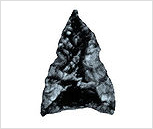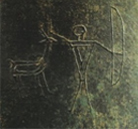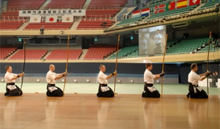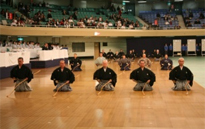Home > About KYUDO
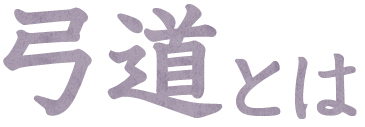
The Aesthetics and Art of the Japanese Yumi
The history of the bow worldwide is an old one. Towards the final years of the Paleolithic Period (10,000BC), there is evidence that tribes in Middle East and Asia had already developed the use of bows. In Japan, artifacts have been discovered that could be considered the Stone Age predecessor of the yumi*. A black lacquered maruki-yumi*, a chokyu* bow, with birch bark wrapping was once discovered to be from the Yayoi Period (300BC - AD300). Furthermore, in hunting scenes depicted on cast bronze bells from the end of the Stone Age, chokyu were illustrated with a nigiri* shown on the lower part of the yumi. In the Chinese chronicles Gishi-Wajin Den (Record of the Wei-Biography of the Wajin), it is written that the yumi used by the Japanese were considered to be chokyu. It is conceivable that these points of ideological and cultural significance, also inferred by the Kojiki (Ancient Chronicles of Japan), point out that bows elsewhere in the world are unparallel in length to the yumi of used in present day Kyudo and most likely nothing similar to the exquisite beauty of the yumi with its shigeto-kyu* ornamentation can be found anywhere else in the world.
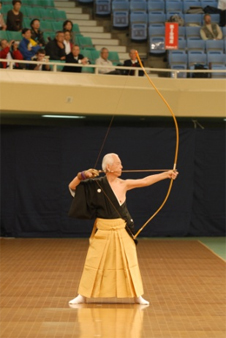
When considering the bows of other countries and comparing them with the Japanese yumi, non-Japanese bows are uniformly shorter and therefore stronger.
As bows are implements for shooting; naturally the intended purpose of a powerful bow was for hitting a target. The development of the Japanese yumi was also in line with this objective.
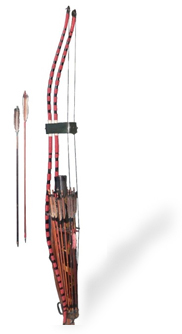
When comparing a Japanese yumi to a Western bow, the Western bow is shorter and stronger, but the yajaku* is not measured. As a result there is no difference in the physical strength of those who use it.
The yajaku for the yumi in Kyudo is taken from the chokyu and this explains why the form of the Hassha* and its intrinsic artistic beauty exist together.
Athough Western archery may be practical, the yumi in Kyudo possess beauty and artistry, its distinguishing features. As it comprises a large sphere in the world of the spirit and mind, yumi was also used in religious rituals.



Record of Etiquette-Truth of Shooting
The shooting, with the round of moving forward or
backward can never be without courtesy and propriety (Rei).
After having acquired the right inner intention and
correctness in the outward appearance, the bow and arrow can be handled resolutely.
To shoot in this way is to perform the shooting with success, and through this shooting virtue will be evident.
Kyudo is the way of perfect virtue. In the shooting, one
must search for rightness in oneself. With the rightness of self, shooting can be realized.
At the time when shooting fails, there should be no
resentment towards those who win. On the contrary, this is an occasion to search for oneself.

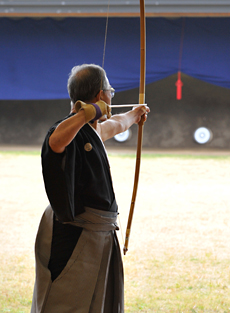
Principles of Shooting
The way is not with the bow, but with the bone, which is of the greatest importance in shooting.
Placing Spirit (Kokoro) in the center of the whole body, with two-thirds of the Yunde (left arm) push the string, and with one-third of the Mete (right arm) pull the bow. Spirit settled, this becomes harmonious unity.
From the center line of the chest, divide the left and right equally into release.
It is written, that the collision of iron and stone will release sudden sparks; and thus there is the golden body, shining white, and the half moon positioned in the west.







